Team Info
There are no articles in this category. If subcategories display on this page, they may contain articles.
Subcategories
CANADIAN (U Sports)
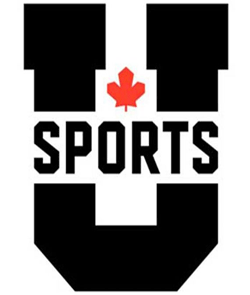 |
|
U SPORTS expects that all participants including Member Institutions, Regional Associations, Directors of Athletics (or equivalents), coaches, officials, student-athletes, administrators, Institution Representatives, volunteers, and others connected to our athletic programs and events uphold our core values of honesty, integrity, fair play, sincerity and honourability. All participants shall accept and actively encourage compliance with both the spirit and the letter of the rules governing U SPORTS, and shall ask for clarity on or interpretation of any rule regarding which there is uncertainty.
New members must declare at least two male and two female U SPORTS sports one of which must be a team sport. In the third year and beyond, new U SPORTS Members must declare at least two male and two female U SPORTS sports including one male and one female team sport. The following minimum participant numbers apply for sport declaration in cross country, swimming, track and field and wrestling:
These minimums are required before an institution can use that particular sport as part of their membership declaration. This does not prevent institutions from sending fewer athletes to a Regional Association or U SPORTS championship, but, in that case, the member will not have met the declaration requirement for that sport
Sources: usports.ca, February 2020
NJCAA
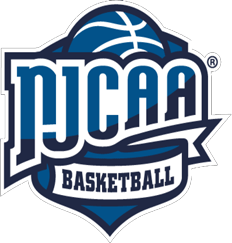 |
|
The National Junior College Athletic Association (NJCAA) oversees three divisions of junior college sports: Division I, Division II, and Division III. These divisions provide varying levels of athletic opportunities and scholarships for student-athletes.
In NJCAA Division I, schools typically offer more scholarships and have larger athletic programs. Eligibility requirements may include high school graduation or its equivalent, along with maintaining a certain number of credit hours each semester.
NJCAA Division II schools have smaller athletic programs and fewer available scholarships compared to Division I. The eligibility criteria for Division II are similar to Division I, focusing on academic standards and credit hour completion.
In NJCAA Division III, athletic scholarships are usually not offered, with an emphasis on the overall college experience and balancing academics and athletics. Eligibility requirements are generally less strict than those in Division I and II but still include academic standards and may require students to complete a minimum number of credit hours.
It's crucial to understand that eligibility requirements can vary among junior colleges and sports within the NJCAA. Prospective student-athletes should contact their chosen junior college's athletic department for specific information regarding eligibility and scholarship opportunities in their sport.
Furthermore, students considering transferring to a four-year institution after attending a junior college should be aware of the NCAA's transfer rules and academic eligibility criteria, which can apply when moving to a Division I or II program. These criteria may involve maintaining a minimum GPA, standardized test scores, and completing a certain number of college-level courses.
Sources: NJCAA Handbook, September 2023
NAIA
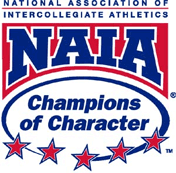 |
|
Active membership in the NAIA is open to fouryear colleges and universities, and upperlevel, twoyear institutions in the United States and Canada that award the bachelor’s (baccalaureate) degree, or its equivalent. Active members must be notforprofit organizations and (for members in the United States) fully accredited by one of the six established regional accrediting bodies. Associate membership is available to fouryear colleges and universities, and twoyear institutions in the U.S. and Canada that award bachelor’s degree(s) but do not hold full accreditation by one of the six institutional accrediting bodies. The NAIA does not require a minimum number of sponsored varsity sports. Consistent with the association’s philosophy of institutional autonomy, active members are permitted to make decisions about sports sponsorship consistent with their institution’s mission and overall budgetary needs. Affiliated NAIA conferences, however, often do have minimum sponsorship requirements that conference members must meet. Maximum institutional aid limits exist for each sport. Financial aid limitations are outlined in Article VIII, Section G of the current NAIA Council of Presidents policy manual. All or a portion of institutional aid awarded to individual studentathletes may be exempted based on academic performance. For example, aid to continuing students with a 3.60 cumulative gradepoint average or who are in the top 10 percent of their class will not count against financial aid limits.
Sources: NAIA.org, July 2005
COLLEGE Division 3
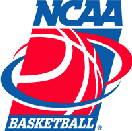 |
|
Division III Qualifications:
Division III institutions have to sponsor at least five sports for men and five for women, with two team sports for each gender, and each playing season represented by each gender. There are minimum contest and participant minimums for each sport. Division III athletics features student-athletes who receive no financial aid related to their athletic ability and athletic departments are staffed and funded like any other department in the university. Division III athletics departments place special importance on the impact of athletics on the participants rather than on the spectators. The student-athlete's experience is of paramount concern. Division III athletics encourages participation by maximizing the number and variety of athletics opportunities available to students, placing primary emphasis on regional in-season and conference competition.
Sources: NCAA.org, July 2005
COLLEGE Division 2
 |
|
Division II institutions have to sponsor at least four sports for men and four for women, with two team sports for each gender, and each playing season represented by each gender. There are contest and participant minimums for each sport, as well as scheduling criteria -- football and men's and women's basketball teams must play at least 50% of their games against Div. II or I-A or I-AA opponents. For sports other than football and basketball there are no scheduling requirements. There are not attendance requirements for football, or arena game requirements for basketball. There are maximum financial aid awards for each sport that a Div. II school must not exceed. Division II teams usually feature a number of local or in-state student-athletes. Many Division II student-athletes pay for school through a combination of scholarship money, grants, student loans and employment earnings. Division II athletics programs are financed in the institution's budget like other academic departments on campus. Traditional rivalries with regional institutions dominate schedules of many Division II athletics programs.
College Division 1
 |
|
Division I member institutions have to sponsor at least seven sports for men and seven for women (or six for men and eight for women) with two team sports for each gender. Each playing season has to be represented by each gender as well. There are contest and participant minimums for each sport, as well as scheduling criteria. For sports other than football and basketball, Div. I schools must play 100% of the minimum number of contests against Div. I opponents -- anything over the minimum number of games has to be 50% Div. I. Men's and women's basketball teams have to play all but two games against Div. I teams, for men, they must play 1/3 of all their contests in the home arena. Schools that have football are classified as Div. I-A or I-AA. I-A football schools are usually fairly elaborate programs. Div. I-A teams have to meet minimum attendance requirements (17,000 people in attendance per home game, OR 20,000 average of all football games in the last four years or, 30,000 permanent seats in their stadium and average 17,000 per home game or 20,000 average of all football games in the last four years OR, be in a member conference in which at least six conference members sponsor football or more than half of football schools meet attendance criterion. Div. I-AA teams do not need to meet minimum attendance requirements. Div. I schools must meet minimum financial aid awards for their athletics program, and there are maximum financial aid awards for each sport that a Div. I school cannot exceed.
Sources: NCAA.org, July 2005
USCAA
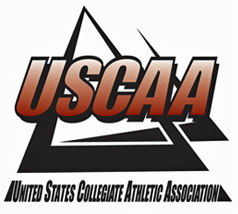 |
|
Colleges in the United States that meet set criteria from the Board of Directors offering educational quality that meet or exceed criteria that is required to grant the school an accreditation. The USCAA provides a national setting that traditional and nontraditional institutions can strive in. The membership is made up of several types of nationally accredited higher education programs. Member institutions offer four year degrees, associates degrees, and trade opportunities. The USCAA has worked to formulate an association that provides an equal playing field for each type of institution. USCAA members typically have small enrollment figures that range between 500 and 2000. The USCAA is proud of its institutions and their outstanding athletic programs, and wants to provide a place where diverse schools feel welcome and can compete at a national level.
The following criteria will be considered in determining the applying institution’s fit in the association.
1.) Institution is considered a small college. Generally, institutions with full-time enrollments over 3,000 full-time students will not be considered.
2.) Institution has similar resources including but not limited to budget, scholarship monies, human resource, etc. as current member institutions.
3.) Institution is on a similar competitive level as other member institutions, as determined by the board of directors.
